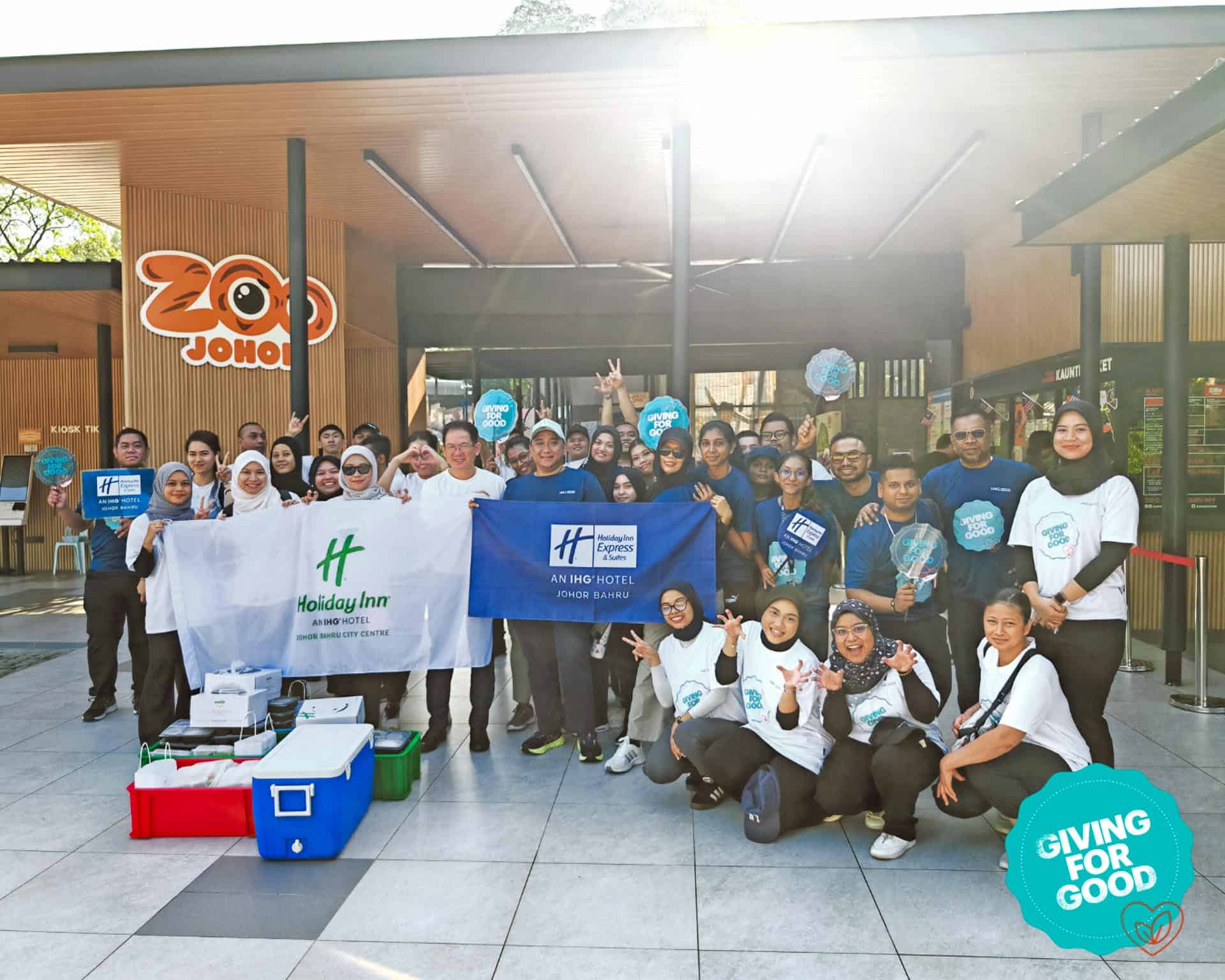
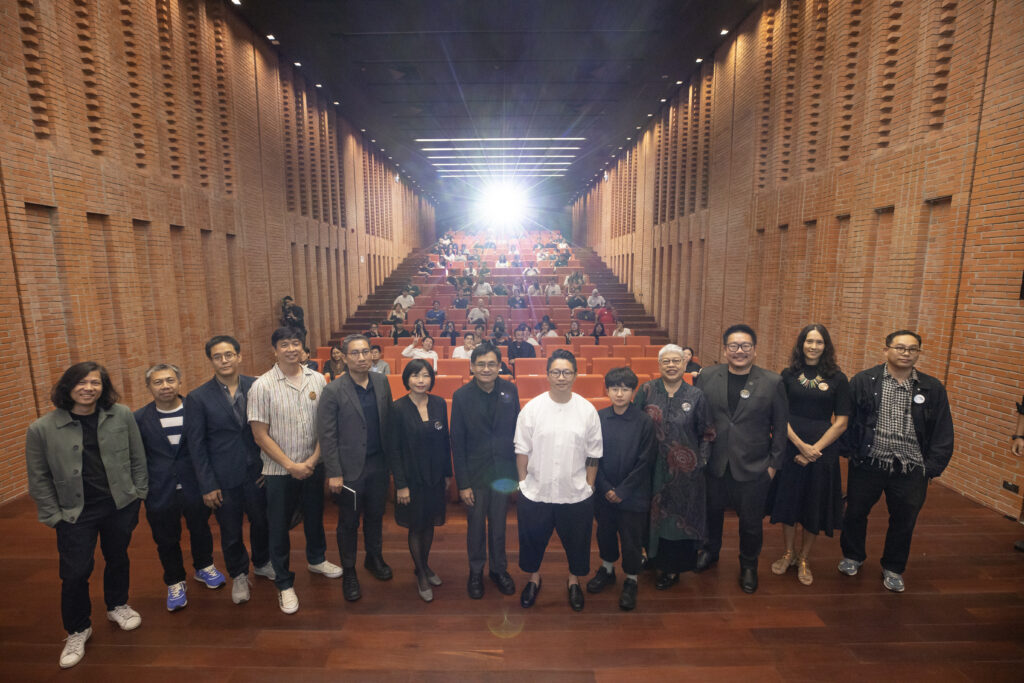
Taipei, 20 May 2024 — The Golden Pin Design Award’s “Design Perspectives × Golden Pin Salon” has expanded its Asian tour this year, hosting five events across Shanghai, Shenzhen, Kuala Lumpur, Bangkok, and Taipei. These gatherings aim to foster international and cross-cultural design exchanges. In May, the tour revisited Malaysia and Thailand, with salons held on the 14th and 16th respectively, featuring prominent creatives from across Asia.
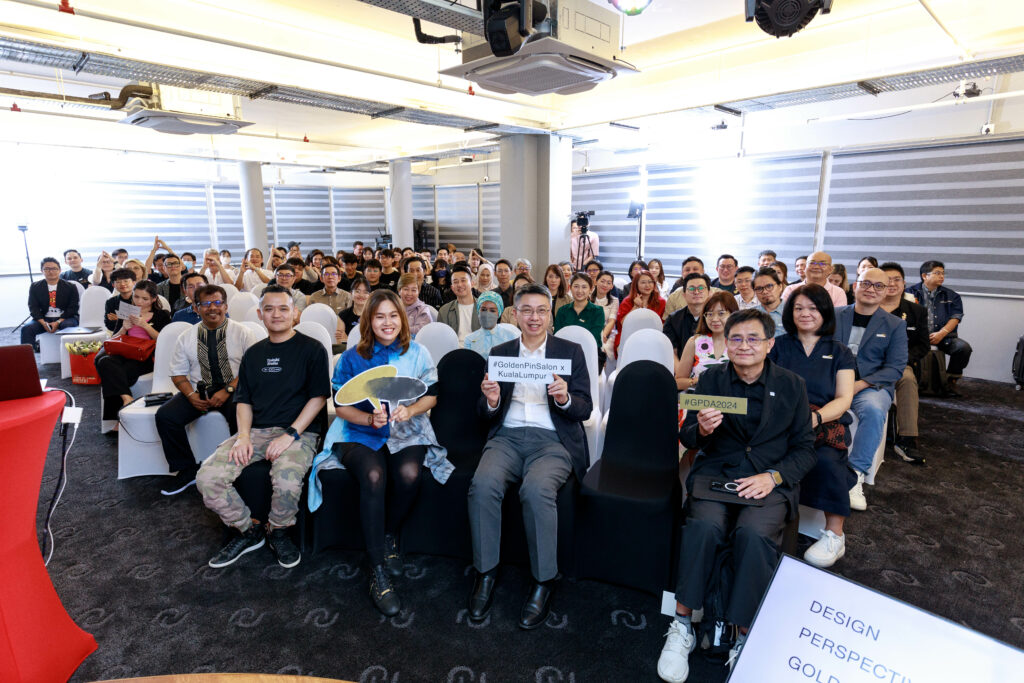
Five speakers included Johnason Lo, founder of Taiwan’s JL DESIGN; Wei Chen, project architect at Metahouse Architects & Associates; Yao, co-founder of the acclaimed design collective 1983ASIA; Thai architect Chatpong Chuenrudeemol, the 2020 Silpathorn Award laureate in the field of architecture; and Krit Phutpim, founder of Dots Design Studio. The events, accessible both online and in-person, drew nearly 500 attendees, generating significant enthusiasm and engagement.
Yao from 1983ASIA: Exploring the Diversity of Asian Cultures
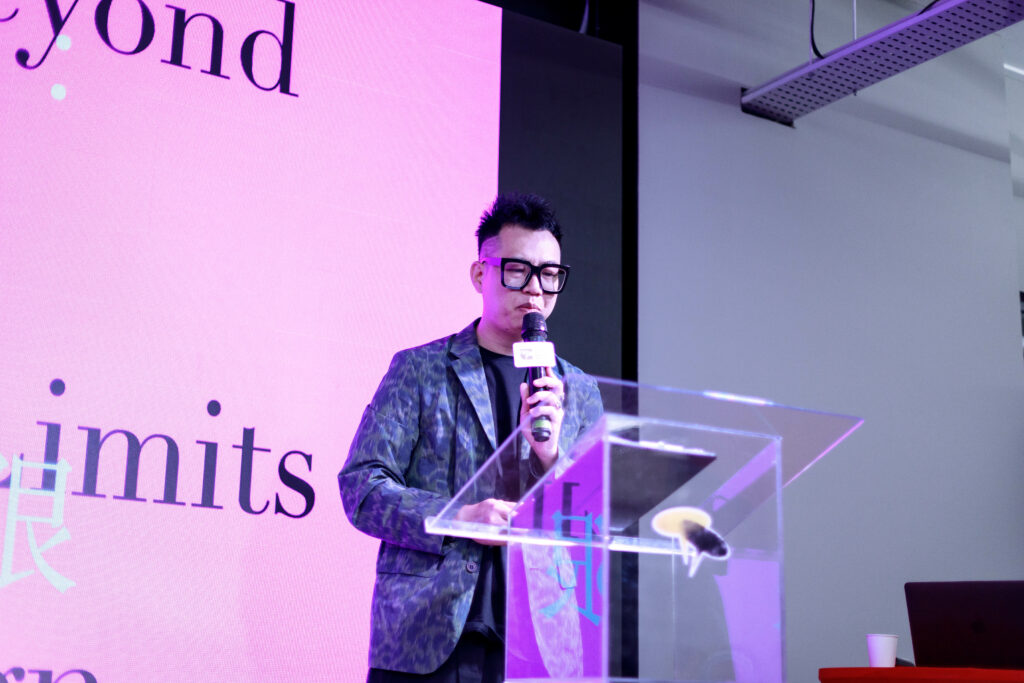
This year’s Kuala Lumpur event once again collaborates with Tsubaki Studio and the media partner CUTOUT Magazine, under the theme “Cultural Connections in Design: Exploring New Territories.” The salon aims to delve into how design serves as a bridge for cross-disciplinary collaboration and facilitates cultural exchange while fostering innovation opportunities.
Malaysian speaker Yao, co-founder of 1983ASIA along with his Chinese partner Su Su, has expanded their design firm from visual design to encompass branding, key visuals, mascots, packaging, and art crossovers. The session opened powerfully with a showreel of their most striking works over the past 12 years. Yao then discussed the establishment of the “Asia Aesthetics Institute,” exploring why they focus on Asian culture and design aesthetics and how this focus drives their diverse ventures. This includes launching a unique floral shirt brand “MASH UP!!! ASIA,” and organizing exhibitions and forums like “Amazing Asia” and “ASIA GOOD DESIGN” to foster engagement within the Asian design community.
Yao also mentioned that, during his studies in China and his time working in Hong Kong, he was often encouraged to “reduce color,” a stark contrast to the vibrant designs he was accustomed to in Malaysia. This “cultural shock” prompted him to explore how different regional environments influence design aesthetics, leading to his research initiative. Drawing from his personal experiences and observations, Yao concluded, “Asian design is imbued with wisdom and love, and its inclusiveness acts as an eraser, removing boundaries between people. Rather than mere assimilation, it fosters a way of living that respects the diverse backgrounds of peace, ethnicity, and culture.”
Chatpong Chuenrudeemol: “Bastards” Architectural Experiment in Angsila Fishing Village
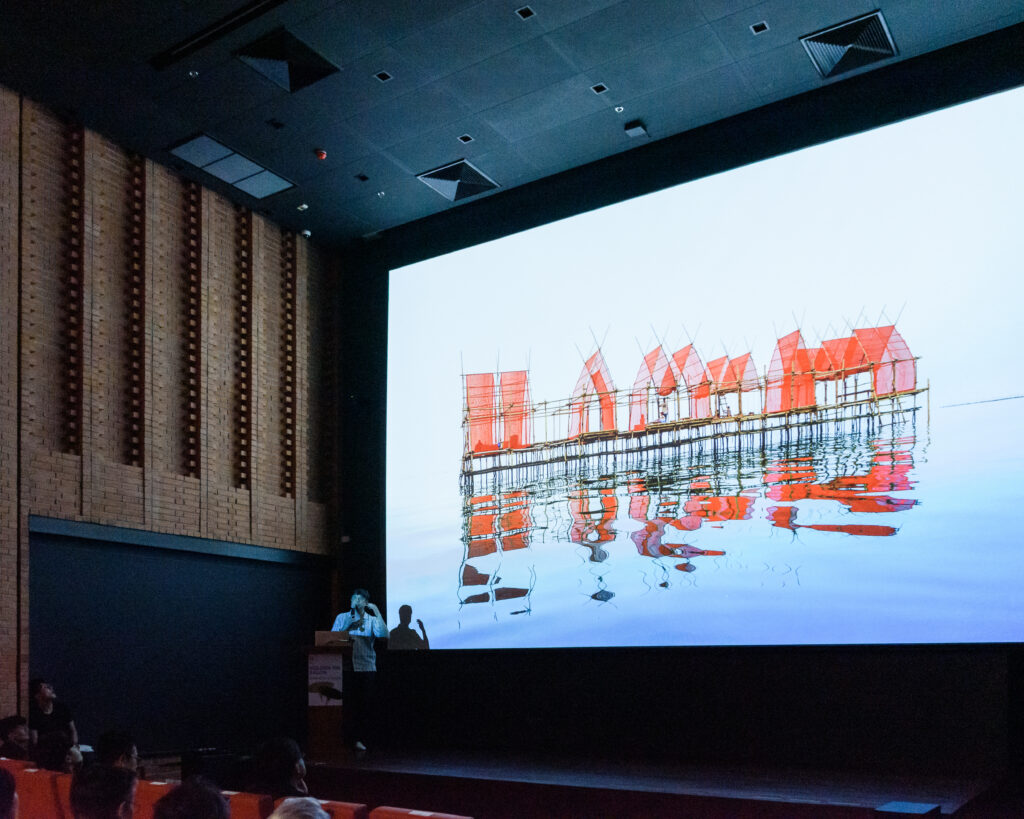
The Bangkok event, in collaboration with Golden Pin Design Award’s Thai media partner “art4d” for the first time, is themed “Unlocking Creative Potential: Values, ideas and attitudes that shape a new design territory for a better world.” It invites design practitioners from diverse backgrounds to explore innovative approaches to contemporary challenges, aiming to create meaningful transformations through creative thinking.
One of the local speakers is Chatpong Chuenrudeemol, director at CHAT architects, who introduced his “Bangkok Bastards” architectural research project. It discussed how people create innovative solutions for everyday problems, such as using two boats to quickly construct a makeshift bridge, revealing a deep reservoir of grassroots ingenuity. Chatpong has extensively documented these seemingly unconventional designs, analyzing their local context and integrating these insights into his architectural work.
Next, he focused on the “Angsila Oyster Scaffolding Pavilion,” last year’s Best Design Award winner of the Golden Pin Design Award. They delved deeply into the issues faced by the declining fishing village and considered how to draw inspiration from the residents’ daily lives and traditional crafts. They integrated the structures and functions of local oyster scaffolds, jellyfish house, and oyster farm “Security Guard” outpost, as well as utilizing discarded safety belts from nearby factories and traditional textiles.
Finally, they created a maritime leisure space that evolves from traditional culture. Here, tourists can experience and taste fresh seafood, engage with fishermen, and immerse themselves in the local culture. Importantly, this new landscape, handcrafted by local residents, has revitalized local tourism and fostered a new sense of identity and initiative among the fishermen’s next generation.
Krit Phutpim: The Social Value and Innovation of Product Design

The second speaker, Thai product designer Krit Phutpim, shared his two-decade journey with Dots Design Studio, focusing on his passion for using design to solve various challenges. He highlighted how religion, materials, and lifestyles can all inspire design. For instance, he repurposes various types of discarded plastic into Buddhist amulets, tying this into recycling initiatives that encourage people to view plastic donation as a meritorious act. Additionally, these amulets, varying in color and material, attract younger generations who may not deeply engage with religious practices.
Additionally, he highlighted two products that won the Golden Pin Design Awards last year. The first, “DOTS KAYAK,” utilizes Thai woodworking techniques with bamboo to create kayaks that are not only aesthetically pleasing but also lightweight and finely textured. The second product, the SWEEPER wireless mouse, is designed for individuals with disabilities. It was meticulously developed from user experience research to enable foot operation, significantly reducing barriers for those unable to use their hands with conventional tech products.
Johnason Lo: The Key to Innovation Lies in Asking the Right Questions
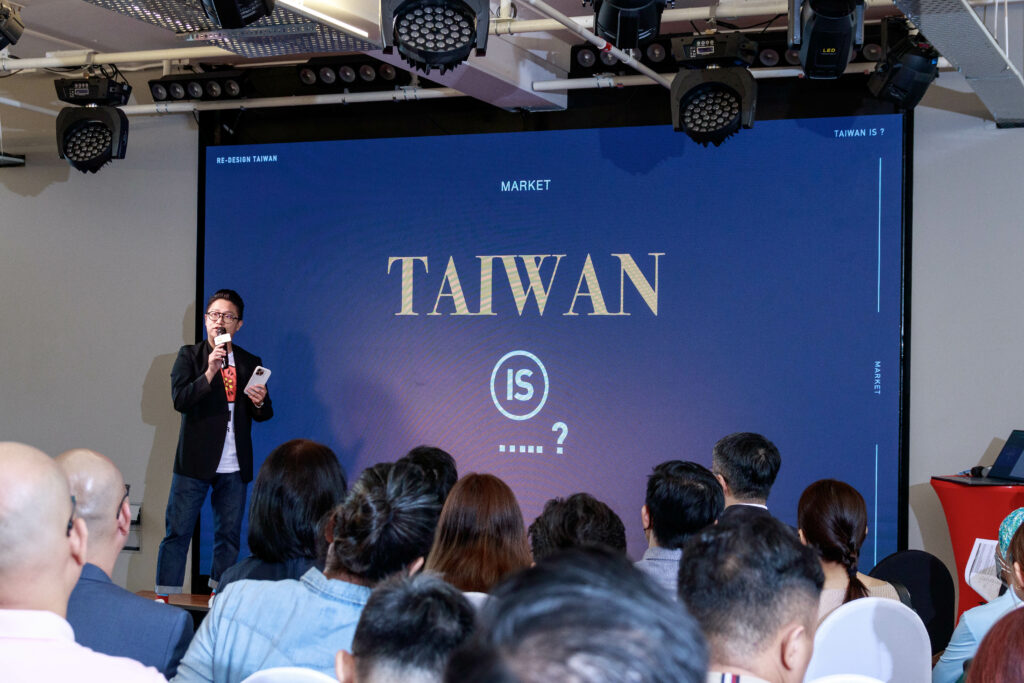
Two Taiwanese designers also participated in the salons held in Thailand and Malaysia, contributing to the design dialogue and exchange. Johnason Lo, a designer and entrepreneur with extensive experience in creativity and large-scale management, captivated the audience with “DESIGN YOURSELF,” a theme through which he shared an inspiring story from Taiwan.
Lo began by introducing the concept of motion design to Taiwan, discussing how they crafted unprecedented visual experiences in commercial projects, setting new benchmarks. He then explored the potential of motion design further, creating visuals for major award ceremonies like Taiwan’s Golden Melody Awards and Golden Horse Awards, thereby bringing the value of design aesthetics to the public. Finally, he shared his experience in integrating design into traditional securities firms to facilitate comprehensive corporate transformations and their innovative approaches to communicating financial concepts to society. Lo emphasized that the key to each innovation is to start by asking the right questions, rather than just seeking the right answers.
Lo concluded that while the three phases may seem distinct, they share a common goal: to nourish Taiwan through great design and change entrenched stereotypes like “ghost island” or “aesthetic desert.” Whether it was branching from motion design into music and video production, founding an animation and special effects company, or facilitating interdisciplinary collaborations at major ceremonies for Taiwanese designers and filmmakers, each effort was driven by the desire to showcase the vibrancy and value of contemporary Taiwanese design. Ultimately, these endeavors aim to provide a platform where design talent can flourish and be recognized.
Wei Chen: Innovating Public Spaces Through Bodily Perception
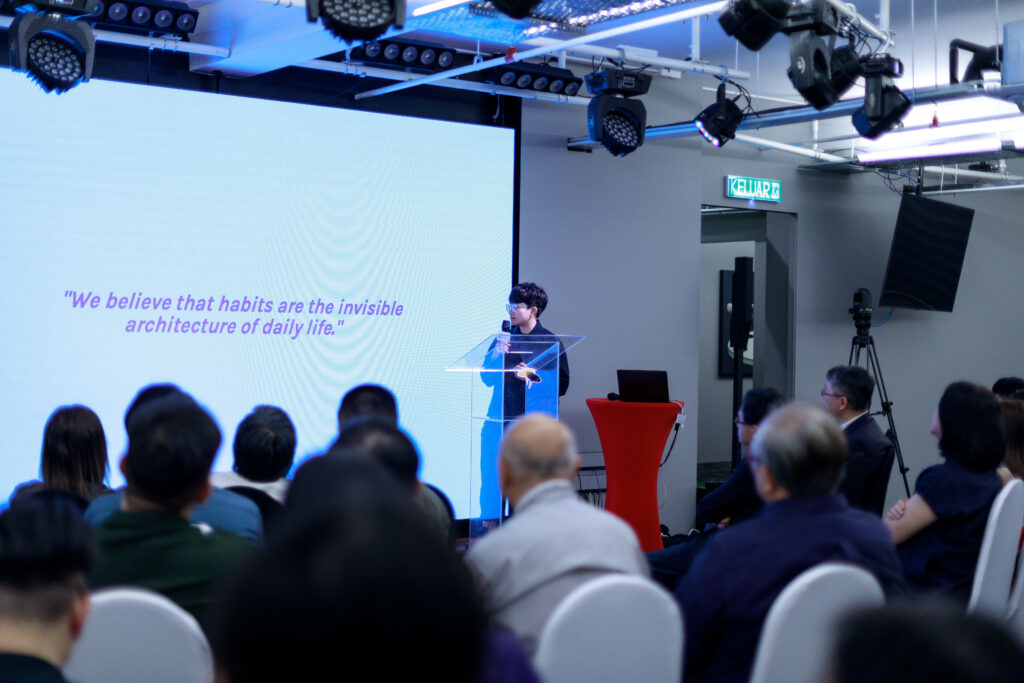
Another speaker from Taiwan, Wei Chen, began her presentation by transporting the audience through a visual journey across Taiwan’s rural landscapes, mountains, and cities. She emphasized that the sensory experiences encountered on this land are a vital source of inspiration for her designs. She then shared insights from her team’s projects, including residential buildings and the public restrooms in front of the Kaohsiung Museum of Fine Arts. Chen discussed how they start with the human sensory experience to inform their spatial design decisions.
Chen also presented the case study of “The Recycling Center in Kaohsiung Municipal Guang Wu Primary School.” She explained how their design strategy transformed the typical dark and enclosed impression of school recycling centers. By utilizing transparent spatial layouts, appropriate circulation planning, and landscape designs that harmonize with the surrounding environment, the project not only revamped the space but also aimed to influence students’ behavior, fostering good habits and a sense of responsibility towards resource and environment protection.
In her conclusion, Chen noted that although it was a small project, they believe architecture influences human behavior, which in turn reshapes the interaction between architecture and its environment. She emphasized that every space has its unique story, waiting to be discovered and experienced.
Final Stop: Taipei Session Coming Soon!
The 2024 Golden Pin Salon in Bangkok has successfully concluded! Next, the tour returns to Taipei for its grand finale. Join us on June 1st, Saturday, at Not Just Library, where renowned designers Irobe Yoshiaki from Japan, Javin Mo from Hong Kong, and Henry Lin from Taiwan will delve into “Urban Culture and Design Aesthetics.” The session will be moderated by Taiwan’s esteemed designer Feng Yu. Expect an enlightening discussion! (Spaces are filling fast—seize the opportunity now!)
The 2024 Golden Pin Design Award is seeking submissions across four categories: Product, Communication, Spatial, and Integrated Design. The award features four major categories: Product Design, Communication Design, Spatial Design, and Integration Design. The vendor applicant must be a business entity or design team. Take advantage of the early bird discount by completing registration and payment by 5:00 PM on June 7th (GMT+8 Taipei Time). The final deadline for submissions is 5:00 PM on June 26th (GMT+8 Taipei Time).